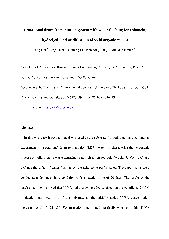摘要
In this work, fresh soybean meal was used as the substrate for both batch and continuous experiments in a rotational drum fermentation (RDF) system to characterize the acidogenic process of solid organic waste degradation at high unionized volatile acid (U-VA) level and evaluate the effect of water flushing on the acidogenic performance. The experiments were conducted under mesophilic condition with a reaction time of 20 days. The results of the batch experiment showed that UNA had a growing adverse effect on the volatile acid (VA) production and hydrolysis of the substrate as the initially added UNA concentration increased (0, 5, 15, 25 g/L). VA formation deteriorated drastically when the initial UNA concentration exceeded 5 g/L. VS degradation ratios decreased from 43.8% to 7.3%, and the hydrolysis rate constants varied between 28.8 and 3.8z x 10(-3)/d in response to the initial UNA concentration. In the continuous experiment, two cascade process configurations (CP1 and CP2) without and with VA removal by water flushing, respectively, were developed. The results showed that the hydrolysis rate constants and VS degradation ratios were 13.1 x 10(-3)/d and 23%, respectively, in CP2, while only 9.1 x 10(-3)/d and 16.7% in CP2. Compared to CP1, the VA spectrum varied little in CP2 with water flushing. It suggested that the higher UNA level had a significant inhibition on the acidogenic process of solid organic waste degradation, and the VA removal by water flushing improved the acidogenic performance.
- 出版日期2008-5
- 单位中国农业大学
